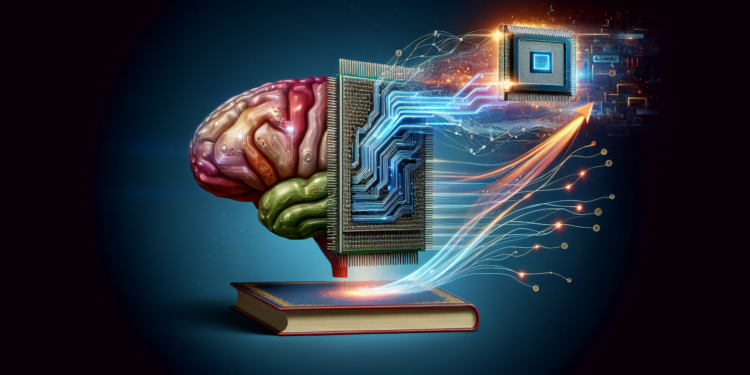Transfer Learning is a prominent approach in artificial intelligence (AI) that enables a model developed for a particular task to apply its acquired knowledge to a different but related task. It constitutes a crucial pillar in the efficiency of machine learning as it reduces the need for extensive data and intensive computation by reusing previously trained models.
History and Evolution
The concept behind Transfer Learning is not new. Its origin can be traced back to the psychology of learning and was later adopted by the AI community. Initially, AI models were trained from scratch for each specific task. However, it was observed that certain patterns or features could be applied to multiple tasks. This observation served as a catalyst for the development of modern Transfer Learning, which today is a cornerstone in the development of faster and more efficient AI systems.
Basic Principles
The principles underpinning Transfer Learning are the source domain and target domain. The source domain is where the machine learning model is initially trained, acquiring general knowledge that may be pertinent to other tasks. The target domain is where this knowledge is applied. The essence is to transfer some of the source domain’s knowledge to the target domain, which can range from reusing features to adapting entire models.
Recent Advancements in Transfer Learning Algorithms
A variety of approaches have emerged to improve the efficacy and applicability of Transfer Learning. Deep neural networks, particularly Convolutional Neural Networks (CNNs) for computer vision and Transformer networks for natural language processing, have played a vital role, facilitating knowledge transfer by reusing already trained layers.
Innovations in Deep Learning
A recent development involves fine-tuning techniques, where the upper layers of a pretrained model are adjusted to tailor it to the specific task of the target domain. Another is feature extraction, where representations learned by a model in the source domain are used as a starting point for the target task.
Differentiation from Previous Work
Unlike older approaches where learning started from scratch for each task, Transfer Learning capitalizes on previously learned information. This not only saves resources but also improves performance in tasks where data are limited or very expensive to acquire.
Practical Applications of AI with Transfer Learning
Transfer Learning has found applicability across a wide range of sectors.
Healthcare Sector
In healthcare, AI models pretrained on large datasets of medical images can be fine-tuned to diagnose rare diseases, significantly reducing the need for vast quantities of labeled data for each specific illness.
Speech Recognition
Speech recognition systems have benefited from Transfer Learning by applying general linguistic knowledge to facilitate adaptation to new languages or dialects with relatively little additional training effort.
Fraud Detection
In the financial sector, fraud detection has been enhanced by transferring patterns of legitimate transactions to systems capable of identifying anomalous behavior, even when specific modalities of fraud were not present in the original dataset.
Comparison and Projection: What Does the Future Hold?
Comparing the current state of Transfer Learning with previous methodologies, a qualitative leap in efficiency and performance is clear. Nonetheless, challenges remain, such as negative transfer, where knowledge from one task may hinder performance on another.
Future Projections
It is anticipated that Transfer Learning will greatly benefit from advancements in unsupervised and semi-supervised learning, expanding its applicability to contexts where data labeling is scarce or nonexistent. Explainable AI, which provides an understanding of how knowledge is transferred between tasks, will also be a significant field of innovation.
Case Studies
Transfer Learning has been key in the success of applications such as Google’s suite of products, including Google Photos and its capability to recognize faces and objects. Here, pretrained CNN models on large datasets of general images are later fine-tuned for specific functions of the application.
Another case study is the use of Transfer Learning in robotics. Robots requiring manipulation capability benefit from models pretrained in simulations or with other robots, transferring this skill to the real world or slightly different tasks.
Conclusion
Transfer Learning represents one of the most dynamic and transformative areas of artificial intelligence. As this approach continues to mature, it is expected to play an even more crucial role in the evolution of intelligent applications. Its ability to mitigate data and resource limitations while continuing to drive performance towards new horizons ensures that its impact will deepen in the years to come.






















